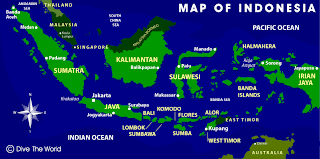
A Map of Myanmar
FACTS AND FIGURES
Official Name : The Union of Myanmar
Capital : Yangon (Rangoon)
Area : About 676 578 square kilometres
Population : About 50, 020 000 (in 2009)
Official Religion : Buddhists
Official Language : Burmese
Location : In Southeast Asia, lies between Bangladesh to its west, India and China to the north and Laos and Thailand to the East
Climate : Tropical climate with three seasons; rainy, cool and hot season
System of Government : Military junta (de facto Military Dictatorship)

A Map of The Philippines
FACTS AND FIGURES
Official Name : The Republic of the Philippines
Capital City : Manila
Area : About 299 764 square kilometres
Population : About 91, 983 000 (in 2009)
Official Religion : Christians
Official Language : Filipino Tagalog and English
Location : In Southeast Asia and in the western Pacific Ocean
Climate : Tropical Climate with rainy season
System of Government : Unitary Presedential Constitutional Republic

A Map of Singapore
FACTS AND FIGURES
Official Name : The Republic of Singapore
Capital : Singapore
Area : About 710.2 square kilometres
Population : About 4,608 167 (in 2008)
Official Religion : Mixed races and therefore there it has a number of religions;Islam, Buddhism, Hinduism etc.
Official Language : Malay, Mandarin, English and Tamil
Location : In the southern tip off the Malay Peninsula
Climate : Equatorial climate, mostly hot and humid and also wet.
System of Government : Parliamentary Republic

A Map of Thailand
FACTS AND FIGURES
Official Name : The Kingdom of Thailand
Capital : Bangkok
Area : About 513 120 square kilometres
Population : About 63, 525 062 (in 2010)
Official Religion : Buddhists
Official Language : Thai
Location : In Southeast Asia, bordered by Cambodia and Laos tothe East, Burma and Laos tothe north, Malaysia to the south and by the Andaman Sea and the southern extremity of Burma to the west.
Climate : Tropical climate with dry and wet season
System of Government : Parliamentary Democracy and Constitutional Monarchy

A Map of Vietnam
FACTS AND FIGURES
Official Name : The Socialist Republic of Vietnam
Capital : Hanoi
Area : About 331 690 square kilometres
Population : About 88, 576 760 (in 2009)
Official Religion : Buddhists
Official Language : Viatnamese
Location : Easternmost country on the Indochina Peninsula in Southeast Asia
Climate : Varies from north to south
System of Government : People's Republic, Communist Single Party State





















































